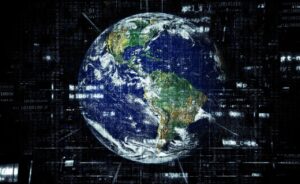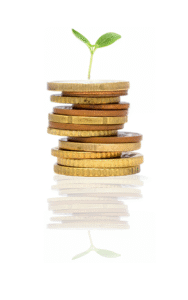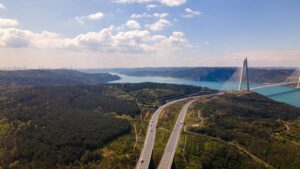The Global Race to Net Zero

The world is at a critical inflection point. The scientific evidence is unequivocal: human-induced climate change poses an existential threat to ecosystems, economies, and societies across the planet. The sixth assessment report of the Intergovernmental Panel on Climate Change (IPCC) made it clear that to avoid the most catastrophic impacts of global warming, we must limit the increase in the global average temperature to 1.5°C above pre-industrial levels. To achieve this goal, the world needs to drastically reduce greenhouse gas (GHG) emissions and reach net zero emissions – the so-called “Net Zero” – by mid-century.
This climate imperative triggered an unprecedented mobilization. More than 130 countries, representing more than 90% of global GDP and 85% of global emissions, have already set or are considering carbon neutrality targets. Thousands of companies, including more than one-fifth of the world’s largest corporations, have announced Net Zero commitments. Cities, universities, financial institutions, and other organizations are following suit, creating a global movement toward decarbonization.
The concept of Net Zero is deceptively simple: to achieve a balance between the amount of greenhouse gases emitted and the amount removed from the atmosphere. In practice, however, the journey to Net Zero is extraordinarily complex, requiring profound transformations in virtually every aspect of economic activity – from how we generate energy and manufacture products to how we design buildings, transport people and goods, and produce food.
For businesses, Net Zero represents both a monumental challenge and a historic opportunity. The challenge lies in the scale and depth of the changes needed: rethinking business models, redesigning products and services, rebuilding supply chains, reimagining production processes, and reorienting investment strategies. The opportunity lies in the chance to lead the transition to a low-carbon economy by capturing new markets, attracting investment, driving innovation, strengthening resilience, and creating long-term value for all stakeholders.
However, not all Net Zero commitments are created equal. The integrity, ambition and credibility of decarbonisation strategies vary enormously. While some companies are implementing comprehensive, science-based plans to reduce emissions across their value chain, others are taking more limited approaches or relying excessively on carbon offsets. This disparity raises important questions about what constitutes a genuine and effective Net Zero strategy.
This article explores in depth the universe of corporate decarbonization and Net Zero strategies. We begin by examining the scientific and conceptual underpinnings of Net Zero, including the differences between carbon neutrality, Net Zero, and negative emissions. We then look at the current landscape of corporate engagements, highlighting examples of leadership and identifying common gaps.
The core of the paper details the essential components of a robust decarbonization strategy, from accurately measuring emissions and setting science-based targets to implementing reduction actions at different scopes and using appropriate offsets. We also explore how different sectors are addressing specific decarbonization challenges, recognizing that the path to Net Zero varies significantly across industries.
We also address the financial aspects of the transition to Net Zero, including investments required, financial risks and opportunities, and the growing role of climate finance. We discuss the common challenges and pitfalls that companies face in their decarbonization journeys, as well as strategies to overcome them.
Finally, we look to the future, exploring emerging trends, promising technologies, and the expected evolution of the regulatory and market landscape related to Net Zero. We conclude with reflections on how companies can go beyond Net Zero to become “climate positive” – actively restoring the climate and regenerating natural systems.
The transition to a Net Zero economy represents one of the greatest economic transformations in human history. For companies, it’s no longer a question of if, but of how and how quickly they’ll be part of this transition. This article aims to provide a comprehensive roadmap for navigating this complex but essential territory, helping organizations develop and implement decarbonization strategies that are ambitious, credible, and aligned with the urgency of the climate challenge we face.
## Chapter 1: Net Zero Fundamentals – Science, Concepts, and Context
To develop effective decarbonization strategies, it is essential to understand the scientific, conceptual, and contextual underpinnings that underpin the Net Zero imperative. This chapter explores these foundations, laying a solid foundation for the more practical and action-oriented discussions in subsequent chapters.
The Scientific Basis: Why Net Zero and Why Now?

The concept of Net Zero is deeply rooted in climate science. To understand its importance, we first need to understand some fundamental principles:
Greenhouse Effect and Global Warming: Greenhouse gases (GHGs) – primarily carbon dioxide (CO2), methane (CH4), nitrous oxide (N2O), and fluorinated gases – act as a “blanket” in the atmosphere, trapping heat that would otherwise escape into space. This natural greenhouse effect is essential for life on Earth, keeping the planet about 33°C warmer than it would be without it. However, since the Industrial Revolution, human activities have drastically increased the concentration of these gases in the atmosphere, intensifying the natural greenhouse effect and causing global warming.
Carbon Budgeting: A crucial concept in climate science is the “carbon budget” – the total amount of CO2 that can be emitted to limit global warming to a certain level. According to the IPCC, to have a 66% chance of limiting warming to 1.5°C, the remaining carbon budget as of 2020 was approximately 400 gigatons of CO2. With annual global emissions of about 40 gigatons, this budget will be exhausted in approximately a decade if emissions continue at current levels.
* **Relationship between Temperature and Emissions:** Science establishes an almost linear relationship between the cumulative total of CO2 emissions and the increase in global temperature. Every additional ton of CO2 contributes to warming, and many climate impacts scale with temperature. This means that every emissions reduction matters, and the sooner we reduce, the better.
The climate system contains several “tipping points” – thresholds that, when crossed, can trigger large, abrupt, and potentially irreversible changes. Examples include the melting of permafrost releasing methane, the collapse of large ice sheets, and the death of tropical forests. These events can create positive feedback loops that further accelerate warming, even if human emissions are reduced later.
Given these scientific realities, the IPCC concluded that to limit warming to 1.5°C (or even 2°C), the world must:
- Reduce global CO2 emissions by around 45% by 2030 (compared to 2010 levels)
- Achieve net-zero CO2 emissions by 2050
- Significantly reduce emissions of other GHGs
The urgency is driven by the fact that we have already warmed the planet by approximately 1.1°C above pre-industrial levels, and the impacts – from extreme heatwaves and wildfires to catastrophic flooding and sea level rise – are already being felt around the world. Every fraction of an additional degree of warming significantly increases the risks and costs for ecosystems, economies and human societies.
Defining the Terms: Carbon Neutrality, Net Zero, and Beyond

While often used interchangeably, there are important distinctions between several terms related to decarbonization:
Carbon Neutrality: Traditionally, this refers to a state where CO2 emissions are balanced by CO2 removals, usually through offsets. This term often focuses only on carbon dioxide and may not include other GHGs. Often, carbon neutrality is achieved primarily through the purchase of carbon credits, without necessarily significantly reducing operational emissions.
Net Zero Emissions: A more comprehensive state where all GHG emissions (not just CO2) are reduced as much as possible, and unavoidable residual emissions are balanced by permanent removals of carbon from the atmosphere. Crucially, Net Zero emphasizes the priority of reducing emissions before resorting to offsets. Net Zero can be applied at different scales (global, national, organizational, product) and scopes (direct vs. indirect emissions).
Net Zero Carbon: Sometimes used to refer specifically to the balance between CO2 emissions and removals, without including other GHGs.
* **Net Negative Emissions:** A state beyond Net Zero, where GHG removals exceed emissions, effectively reducing the concentration of GHG in the atmosphere over time. Many IPCC scenarios for limiting warming to 1.5°C rely on negative emissions in the second half of this century.
* **Climate Positive or Carbon Negative:** Terms that describe organizations or activities that go beyond Net Zero to create a net environmental benefit by removing more GHGs from the atmosphere than they emit.
* **Zero Emissions:** The complete elimination of GHG emissions, without depending on offsets. Although it is the ultimate goal for many activities, absolute zero emissions may be technically unfeasible for some sectors in the near future, hence the importance of the “net” concept.
Decarbonization : The process of reducing carbon emissions, particularly through the transition from fossil fuels to low- or zero-carbon energy sources. Deep decarbonization refers to large-scale emissions reductions (usually 80% or more).
For companies, it is crucial to be precise and transparent about which of these objectives is being pursued, which GHGs are included, which value chain activities are covered, and what the balance is between actual reductions and offsets.
Emissions Scopes: Mapping the Corporate Carbon Footprint

To develop effective Net Zero strategies, companies first need to understand and quantify their GHG emissions. The most widely accepted framework for categorizing corporate emissions is the GHG Protocol, which divides emissions into three “scopes”:
* **Scope 1: Direct Emissions**
* Emissions that occur directly from company-owned or controlled operations
* Examples: combustion of fuels in boilers, furnaces and company vehicles; fugitive emissions from refrigeration systems; Emissions from chemical processes at company-owned facilities
* **Scope 2: Indirect Energy Emissions**
* Emissions associated with the generation of electricity, steam, heating or cooling purchased by the company
* These are accounted for in two ways:
Location-Based: Reflects the average emissions intensity of the grid where consumption occurs
* **Market-Based:** Reflects the electricity emissions that the company has contractually chosen (e.g., through renewable energy certificates)
* **Scope 3: Other Indirect Emissions**
* All other indirect emissions that occur in the company’s value chain
* Divided into 15 categories, including:
Upstream: Purchased goods and services, capital goods, fuel and energy-related activities, upstream transportation and distribution, waste generated from operations, business travel, employee displacement, upstream leased assets
Downstream transportation and distribution, processing of products sold, use of products sold, end-of-life treatment of products sold, downstream leased assets, franchises, investments
For most companies, Scope 3 emissions account for the majority of their total carbon footprint – often more than 70% for manufacturing and retail companies. However, these are also the most difficult to measure and influence, as they occur in parts of the value chain that the company does not directly control.
A comprehensive Net Zero strategy should address all three scopes, although the approach and timeline may vary. Emerging best practices, such as the Science Based Targets initiative’s (SBTi) Net-Zero Standard, call for:
* 90-95% reduction in Scope 1 and 2 emissions by Net Zero date
* Significant reduction in Scope 3 emissions (usually at least 90%)
* Neutralization of any residual emissions through carbon removals
The Global Context: Climate Agreements and Regulatory Frameworks

Corporate Net Zero strategies don’t exist in a vacuum – they are shaped and influenced by an evolving ecosystem of international agreements, national policies, and stakeholder expectations:
* **Paris Agreement (2015):** The most significant milestone in global climate governance, committing countries to limit global warming to well below 2°C, preferably to 1.5°C, above pre-industrial levels. The agreement establishes a framework for Nationally Determined Contributions (NDCs) – climate plans that each country must update every five years with increasing ambition.
Race to Zero: A UN-led global campaign to mobilize non-state actors (companies, cities, regions, financial institutions) to adopt robust Net Zero commitments. It sets minimum criteria for credible commitments, including immediate action, alignment with science, and transparency.
National Policies: Countries are implementing a variety of policies to drive decarbonization, including:
Carbon Pricing: Carbon taxes and emissions trading systems (ETS) in more than 60 jurisdictions
Standards & Regulations: Energy Efficiency, Renewable Energy, Vehicle Emissions
* **Incentives:** Grants, tax credits and financing for clean technologies
Disclosure Requirements: Increasing Obligations to Report Climate Emissions and Risks
* **Regional Regulatory Frameworks:**
* **European Union:** The European Green Deal aims to make Europe the first climate-neutral continent by 2050, with an intermediate target of a 55% reduction in emissions by 2030. It includes the EU Emissions Trading System (EU ETS), the Carbon Border Adjustment Mechanism (CBAM) and the EU green taxonomy.
* **United States:** Under the Biden administration, it rejoined the Paris Agreement and set emissions reduction targets of 50-52% by 2030 and Net Zero by 2050. The Inflation Reduction Act of 2022 represents the largest climate investment in U.S. history.
* **China:** Committed to peak emissions before 2030 and carbon neutrality by 2060. It launched the world’s largest carbon market in 2021.
* **Brazil:** Committed to reducing emissions by 50% by 2030 and achieving carbon neutrality by 2050. Combating deforestation is central to Brazil’s climate strategy.
Investor Pressure: Initiatives such as Climate Action 100+ (investors with more than $54 trillion in assets) are pushing the largest issuing companies to adopt Net Zero targets, improve climate governance, and strengthen climate-related disclosures.
Consumer and Talent Expectations: Research shows that consumers, especially Gen Z and Millennials, are increasingly factoring climate factors into their purchasing decisions. Similarly, corporate climate action is becoming an important factor in attracting and retaining talent.
This evolving context creates both pressures and opportunities for businesses. Those that anticipate regulatory trends, respond to stakeholder expectations, and lead the transition to Net Zero will be better positioned to thrive in a low-carbon economy.
The Business Case for Net Zero

While the moral and scientific imperative for climate action is clear, companies also need to understand the business case for Net Zero. Fortunately, growing evidence suggests that ambitious decarbonization strategies can create value in multiple ways:
* **Risk Management:**
Regulatory Risks: Anticipate and prepare for stricter climate policies, including carbon pricing and disclosure requirements
Physical Risks: Increase resilience to climate impacts such as extreme weather events, water scarcity, and supply chain disruptions
Transition Risks: Mitigate risks from stranded assets, changing consumer preferences, and technology disruption
Litigation Risks: Reduce exposure to climate-related lawsuits, which are increasing globally
* **Cost Reduction:**
* **Energy Efficiency:** Significant savings through improvements in the energy efficiency of buildings, processes and transportation
Renewable Energy: Decreasing solar and wind costs, often below fossil fuels, with greater price predictability
Resource Efficiency: Reduction in the use of materials, water, and other resources through circular design and process optimization
Carbon Cost Anticipation: Avoid future costs as carbon pricing expands globally
* **Revenue Growth:**
* **New Products and Services:** Developing low-carbon offerings for growth markets
**Price Premium:** Ability to charge premium prices for sustainable products and services in some segments
Market Access: Meeting increasing low-carbon requirements in public tenders and corporate supply chains
Market Share: Attracting increasingly climate-conscious consumers
* **Competitive Advantages:**
* **Innovation:** Catalyze innovation in products, services and business models
* **Talent Attraction and Retention:** Engage employees with shared purpose and values
Reputation and Brand: Strengthen corporate reputation and brand value
Stakeholder Relations: Improve relationships with regulators, communities, and NGOs
* **Financial Benefits:**
Access to Capital: Improved access to sustainable finance and preferential rates
Stock Appreciation: Growing Evidence of Correlation Between Strong ESG Performance and Stock Appreciation
Lower Cost of Capital: Potential to reduce cost of capital through better risk management and access to green financial instruments
Case studies of leading companies demonstrate that well-executed Net Zero strategies can create significant value. For instance:
* Unilever reports that its sustainable brands grow 30% faster than the rest of the business
* Schneider Electric attributes €12 billion in revenue (70% of total) to offerings that help customers reduce emissions
* Siemens saved €60 million in energy costs through energy efficiency projects between 2014 and 2020
Crucially, the business case for Net Zero is strengthening as the costs of clean technologies fall, climate policies strengthen, and stakeholder expectations evolve. Companies that act early have the opportunity to shape markets, develop expertise, and establish leadership in a rapidly decarbonizing economy.
Beyond Carbon: Connections to Other Environmental and Social Goals

While focusing on Net Zero is crucial, it is important to recognize that decarbonization does not occur in isolation from other environmental and social goals. A holistic approach recognizes and maximizes synergies while managing potential trade-offs:
* **Synergies with Other Environmental Objectives:**
* **Circular Economy:** Circular strategies such as material reduction, reuse, and recycling often reduce embodied emissions
Biodiversity Conservation: Nature-based solutions for carbon sequestration can protect and restore habitats
Air Quality: Transitioning away from fossil fuels reduces unhealthy air pollutants
Water Conservation: Many energy efficiency strategies also reduce water use
* **Social Considerations:**
Just Transition: Ensure that the transition to Net Zero does not exacerbate inequalities and create opportunities for vulnerable communities
Health and Wellness: Many climate solutions bring health co-benefits (e.g., plant-based diets, active mobility)
Energy Access: Balancing decarbonization with the need to expand energy access in developing regions
Indigenous Rights: Respect the rights and knowledge of Indigenous peoples in conservation and renewable energy projects
* **SDG alignment:**
Net Zero strategies can contribute to multiple UN Sustainable Development Goals, including:
* SDG 7: Affordable and Clean Energy
* SDG 9: Industry, Innovation and Infrastructure
* SDG 11: Sustainable Cities and Communities
* SDG 12: Responsible Consumption and Production
* SDG 13: Action Against Global Climate Change
* SDG 15: Life on Land (through nature-based solutions)
* **Potential Trade-offs to Manage:**
* **Land Use:** Competition between renewable energy, food production, and biodiversity conservation
Critical Minerals: Increased demand for cleantech minerals could have environmental and social impacts on mining
Distributional Impacts: Climate policies can disproportionately affect vulnerable groups if not carefully designed
Speed vs. Inclusion: Balancing the urgency of climate action with inclusive decision-making processes
Leading companies are adopting a “systems” approach to Net Zero, considering these interconnections and pursuing strategies that create shared value across multiple dimensions of sustainability. For example, mangrove restoration can sequester carbon, protect biodiversity, improve coastal resilience, and support local livelihoods simultaneously.
The Future of the Circular Economy and the Way Forward

The circular economy represents much more than a passing trend or a set of isolated sustainability practices. It constitutes a fundamental reimagining of how our economy can and should function – a model that aligns economic prosperity with environmental regeneration and social well-being. Throughout this article, we have explored the principles, benefits, challenges, and practical applications of the circular economy in various sectors and contexts. In this final chapter, we will synthesize the main findings and look to the future, envisioning how the circular economy can evolve in the coming decades and what role each of us can play in this vital transformation.
Overview: Why the Circular Economy is Imperative
The transition to a circular economy is not only desirable but imperative, for multiple reasons:
- Planetary Boundaries: Our linear economic model is surpassing several critical planetary boundaries, including climate change, biodiversity loss, and alterations in biogeochemical cycles. The circular economy offers a pathway to operate within these boundaries while still meeting human needs.
- Scarcity and Volatility Risks: The continued reliance on finite resources exposes businesses and economies to increasing risks of shortages, supply chain disruptions, and price volatility. Circularity increases resilience by diversifying material sources and reducing dependence on virgin resources.
Untapped Economic Opportunities: The systematic waste of the linear model represents trillions of dollars in lost value annually. The circular economy unlocks new sources of value creation, drives innovation, and creates jobs in emerging sectors.
- Evolving Social Demands: Consumers, investors, employees, and regulators are increasingly demanding that companies adopt more sustainable and transparent practices. The circular economy responds to these evolving expectations and helps build trust and social legitimacy.
- Alignment with Global Goals: The circular economy directly contributes to multiple UN Sustainable Development Goals (SDGs), including responsible consumption and production (SDG 12), climate action (SDG 13), life below water (SDG 14), life on land (SDG 15) and partnerships for the goals (SDG 17).
Emerging Trends That Will Shape the Future of the Circular Economy

Several transformative trends are converging to accelerate and shape the evolution of the circular economy in the coming decades:
Digitalization and Circular Economy: The convergence between digital technologies and circular principles is creating what some call “Circular Economy 4.0.” Internet of Things, blockchain, artificial intelligence, augmented reality, and other technologies are enabling unprecedented levels of traceability, resource optimization, dematerialization, and new circular business models. For example, “digital product passports” will allow for the tracking of materials over multiple cycles of use, facilitating value recovery and ensuring transparency.
- Circular Bioeconomy and Biomimicry: The integration between circular economy and bioeconomy is gaining momentum, with a focus on the sustainable use of renewable biological resources and the application of nature-inspired principles to product and system design. Advances in biotechnology, synthetic biology, and materials engineering are enabling the development of new biomaterials with superior properties and lower environmental impact. Biomimicry – learning from and emulating strategies found in nature – is inspiring innovative circular solutions.
Regenerative Circularity: The circular economy is evolving from an initial focus on reducing negative impacts to a more ambitious approach to active regeneration – not just “doing less harm,” but “doing it well.” This includes practices such as regenerative agriculture, ecosystem restoration, and the design of products and services that actively improve environmental and social conditions.
- Localization and Decentralization: Although the circular economy operates on a global scale, there is a growing trend towards “relocalization” of certain aspects of production and consumption, creating shorter and more resilient cycles. Technologies such as additive manufacturing (3D printing), distributed renewable energy, and urban agriculture are enabling more decentralized production systems adapted to local contexts.
- Democratization and Inclusion: The circular economy is becoming more inclusive and democratic, with a greater emphasis on ensuring that its benefits are widely shared. This includes business models that prioritize access over ownership, making products and services more accessible; open source initiatives that share knowledge and circular technologies freely; and efforts to integrate informal workers (such as waste pickers) into formal circular value chains.
Circular Metrics and Accounting: More sophisticated systems for measuring circularity are emerging, going beyond simple metrics such as recycling rates to consider aspects such as value retention, durability, intensity of use, and social impacts. In parallel, new accounting models are being developed to properly capture the value of circular assets and internalize environmental and social externalities.
- Circularity as a Regulatory Standard: Regulations that incorporate circular principles are becoming more comprehensive and stringent globally. The European Union leads the way with its Circular Economy Action Plan and initiatives such as the “Right to Repair”, eco-design requirements and ambitious recycling targets. Other regions are expected to follow with similar regulatory frameworks, creating a global push for circularity.
Visions for a Full Circular Economy in 2050

What would a world that has fully embraced the principles of the circular economy look like? While specific manifestations vary across regions and cultures, we can glimpse some common elements of a truly circular economy in 2050:
- Circular Energy Systems: 100% renewable energy, with efficient storage and smart grids that optimize supply and demand. Energy infrastructure designed for disassembly and reuse, with critical materials such as rare metals in batteries circulating in closed cycles.
- Circular Mobility: Mobility systems based on shared services, electric vehicles with modular design for easy upgrade and remanufacturing, and transportation infrastructure that integrates circular principles from design to maintenance and eventual renewal.
- Circular Built Environment: Buildings designed as temporary “material banks”, with demountable and reusable components. Existing buildings continuously adapted for new uses rather than demolished. Regenerative building materials that sequester carbon and improve air quality.
- Circular Food Systems: Regenerative agriculture that improves soil health and biodiversity. Short, transparent supply chains that minimize losses. Organic waste systematically returned to the soil as nutrients. More plant-based diets, with animal proteins produced sustainably and in smaller quantities.
- Products Circular by Design: All products designed from the ground up for durability, repairability, upgradeability, and eventual recyclability. Toxic materials eliminated and replaced with safe alternatives. Products accompanied by “digital passports” that facilitate maintenance and value recovery.
- New Ownership and Access Models: Service, sharing, and performance-based business models largely replace individual ownership for many product categories. Digital platforms facilitate efficient access to goods and services when needed.
- Cities as Circular Ecosystems: Urban areas functioning as ecosystems, where the flows of materials, energy, water and nutrients are optimized and integrated. Large-scale industrial symbiosis, with waste from one activity systematically used as resources for another.
- Regenerative Economy: Economic activities that not only minimize negative impacts, but actively regenerate natural and social capital. Businesses measured not just by financial profits, but by positive contributions to natural systems and communities.
- Culture of Sufficiency and Well-being: Cultural evolution beyond consumerism, with greater emphasis on well-being, social connection, creativity and experiences about material accumulation. Redefining prosperity to include environmental quality, health, education and free time.
- Collaborative Governance: Multi-level governance systems that facilitate collaboration between different actors (government, business, civil society, citizens) and align incentives for circular outcomes. Transparent and participatory decision-making on common resources.
This vision is not utopian – elements of it already exist in pioneering initiatives around the world. The question is not whether a circular economy is technically possible, but whether we can mobilize the political will, investments, and cultural changes needed to realize it at sufficient scale and speed.

The transition to a full circular economy will not happen overnight. It is a journey that requires coordinated action on multiple fronts and by various actors. Some key priorities to accelerate this transition include:
- Systemic Change vs. Incrementalism: While incremental improvements are valuable, true transformation requires systemic change that addresses root causes rather than symptoms. This means fundamentally rethinking how products are designed, how business models are structured, and how economic success is measured.
Pre-competitive collaboration and partnerships: The circular economy requires unprecedented collaboration between competitors, along value chains, and across sectors. Pre-competitive collaboration platforms allow companies to work together on shared challenges such as standardization, infrastructure, and R&D, while still competing in other aspects.
- Financial Innovation for Circularity: New financial instruments are needed to support circular business models, which often have different risk-return profiles than linear ones. This includes patient financing that recognizes long-term returns, risk-sharing mechanisms, and appropriate valuation of externalities.
- Education and Capacity Development: Integrate circular principles at all educational levels, from primary schools to MBA programs and professional training. Develop new skills needed for the circular economy, from regenerative design to life cycle analysis and facilitating multi-stakeholder collaboration.
- Inspiring Narratives and Cultural Mobilization: Develop and amplify powerful narratives that inspire action and connect the circular economy to deeply held values such as care for future generations, community, and harmony with nature. Engage artists, storytellers, and cultural leaders in this effort.
- Transformative Public Policies: Implement ambitious policies that create favorable conditions for circularity, including green tax reform, extended producer responsibility, ecodesign standards, and circular public procurement. Align policies in different areas (industrial, commercial, environmental, social) to avoid contradictions.
- Metrics and Transparency: Develop and widely adopt robust metrics to measure progress towards circularity at multiple levels (products, companies, sectors, cities, countries). Increase transparency about material flows, environmental and social impacts, and business practices.
- Justice and Just Transition: Ensure that the transition to a circular economy is fair and inclusive, with special attention to workers and communities potentially negatively affected by the shift from linear to circular sectors. Create programs for reskilling, social protection and inclusive economic development.
- Accelerating Innovation: Increasing investments in research, development and demonstration of circular technologies, materials and business models. Create regulatory sandboxes that allow testing innovative approaches with appropriate safeguards.
- Visionary and Courageous Leadership: Cultivate and support leaders across sectors who have the vision, courage and skills to catalyze transformative change towards circularity, even when it challenges the status quo and vested interests.
The Role of Each Actor in the Circular Transition

The transition to a circular economy requires action from all segments of society, each with complementary roles:
- Companies and Entrepreneurs:
- Redesign products and services with circular principles from the ground up
- Develop and scale innovative circular business models
- Set ambitious circularity and transparency targets
- Collaborate along the value chain and with other stakeholders
- Use influence to advocate for circularity-friendly policies
- Governments and Policymakers:
- Establish long-term vision and roadmaps for the circular economy
- Implement policies that encourage circularity and disincentivize linearity
- Invest in infrastructure and R&D for circular economy
- Use public procurement to create demand for circular products and services
- Facilitate multisectoral collaboration and citizen engagement
- Civil Society and NGOs:
- Monitor and hold companies and governments accountable for circular commitments
- Educate and mobilize citizens for action
- Develop and share knowledge and best practices
- Represent marginalized voices in the circular economy debate
- Catalyze collaboration between different actors
- Academia and Research Institutions:
- Advance scientific and technological knowledge for circular solutions
- Train the next generation of professionals with circular skills
- Develop metrics and methodologies to assess circularity
- Provide independent, evidence-based analysis
- Facilitate knowledge transfer between theory and practice
- Financial Institutions:
- Develop financial products adapted to circular business models
- Integrate circularity criteria into investment decisions
- Mobilize capital for infrastructure and circular innovation
- Develop expertise in assessing risks and circular opportunities
- Use shareholder influence to promote circular practices
- Citizens and Consumers:
- Adopt more circular consumption practices (buy less and better, repair, share)
- Participate in circular community initiatives
- Engage civically to influence business policies and practices
- Develop and share relevant skills (repair, gardening, etc.)
- Inspire others through example and dialogue
- Media and Communicators:
- Raise awareness of circular economy and its benefits
- Highlight inspiring stories and best practices
- Promote informed debate on challenges and trade-offs
- Hold powerful actors accountable for their actions and commitments
- Translate complex concepts into accessible messages
Final Reflection: From Linear to Regenerative Economy

The circular economy represents a fundamental evolution in our understanding of what economic prosperity means and how it can be achieved. We are witnessing a gradual transition through different economic paradigms:
- Linear Economy (Take-Make-Dispose): Focus on maximizing production and consumption, with little regard for planetary boundaries or long-term impacts.
- Recycling Economy: Recognition of the need to recover materials, but still within a fundamentally linear paradigm, with a focus on the “end of life” of products.
- Circular Economy: Systemic redesign of products, services, and systems to eliminate waste and pollution, keep products and materials in use, and regenerate natural systems.
- Regenerative Economy: A step beyond circularity, where human activities not only minimize negative impacts, but actively regenerate and improve the natural and social systems we depend on.
The journey towards a truly regenerative economy is perhaps the greatest challenge and the greatest opportunity of our era. It requires not only technological innovation and new business models, but also an evolution in our collective consciousness – a redefinition of what we consider progress, success, and a life well lived.
The circular economy is not just a set of practices or policies, but an invitation to reimagine our relationship with the material world, with each other, and with the living systems of which we are a part. It is a call to create an economy that thrives not at the expense of nature and future generations, but in harmony with them.
The path ahead will not be linear or without obstacles. There will be resistance, setbacks, and unexpected complexities. But there will also be surprising innovations, inspiring collaborations, and transformations that we can hardly imagine today. What is certain is that the transition to a circular economy is not only possible, but is already underway – and each of us has a role to play in accelerating and shaping it for the benefit of all.

Sem comentários